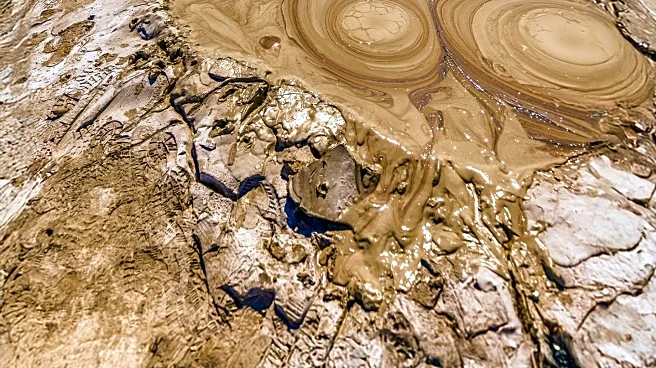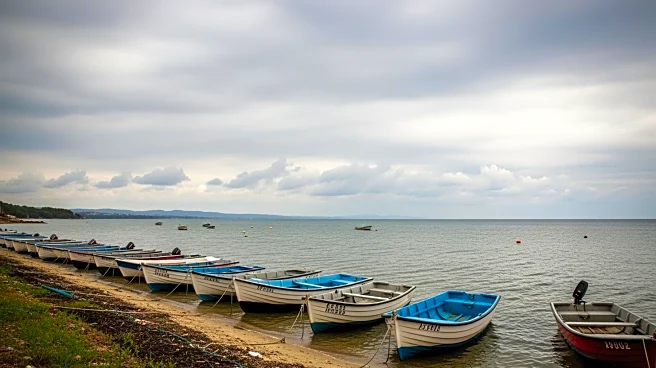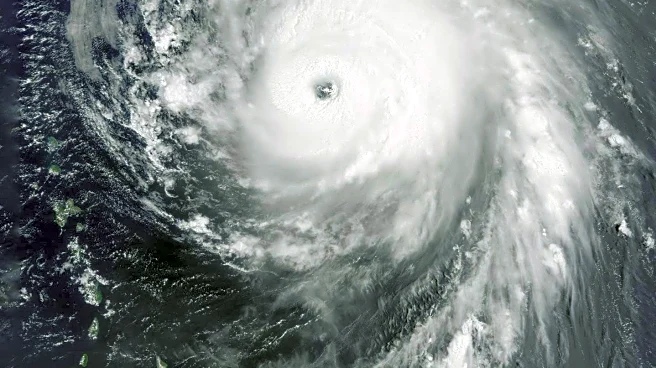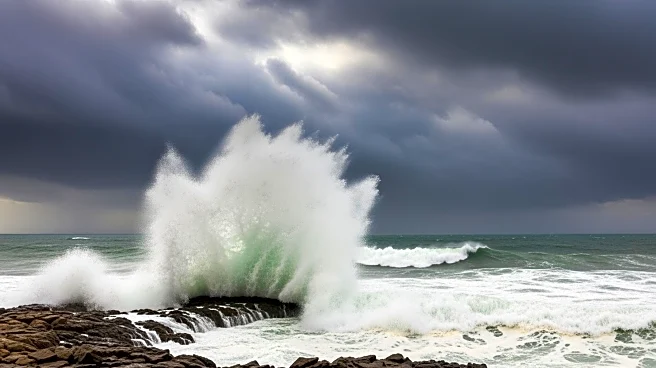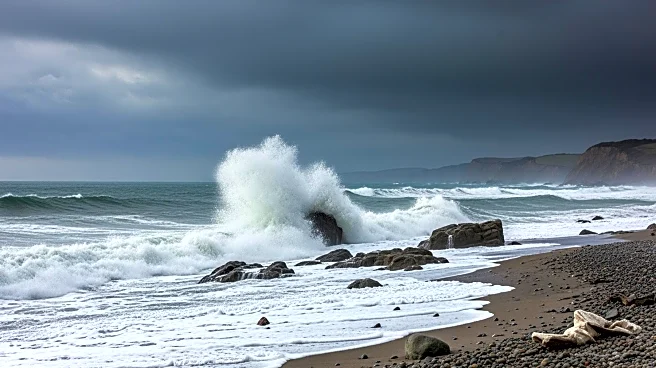What's Happening?
A mud volcano in southern Taiwan erupted on Wednesday, spewing water, sediments, and gas. The eruption attracted local residents who engaged with the spectacle by throwing flaming rags into the volcano, igniting the methane gas emitted during the eruption.
The Wandan mud volcano is known for its unusual geological activity, having erupted 11 times in the past three years. Geologist Dr. Mark Tingay noted that while the volcano typically erupts in the same location, new eruption sites can emerge kilometers away.
Why It's Important?
The eruption of the mud volcano is a reminder of the dynamic geological activity in Taiwan, which is situated on the Pacific Ring of Fire. Such natural phenomena can have implications for local communities, including potential impacts on agriculture, infrastructure, and tourism. The event also highlights the need for ongoing geological monitoring and research to better understand and predict volcanic activity, which can be crucial for disaster preparedness and risk management.
What's Next?
Local authorities may increase monitoring of the mud volcano to anticipate future eruptions and mitigate potential risks to nearby communities. The event could also prompt further scientific studies to explore the causes and effects of mud volcanoes in the region. Additionally, the spectacle may attract tourists and researchers interested in geological phenomena, potentially boosting local tourism.
Beyond the Headlines
The eruption raises questions about the interaction between natural phenomena and human activities, particularly in terms of safety and environmental impact. It also underscores the cultural significance of such events, as locals engage with the spectacle in traditional ways. The phenomenon may contribute to broader discussions on environmental conservation and sustainable tourism in areas prone to natural disasters.
